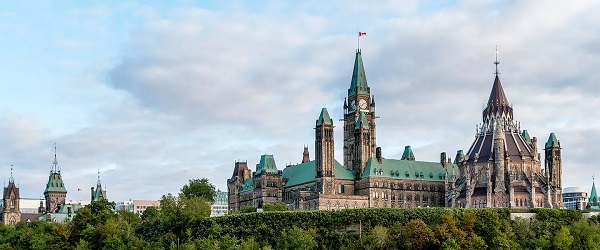International
Can Russian And Chinese Agents Legally Vote In DC?
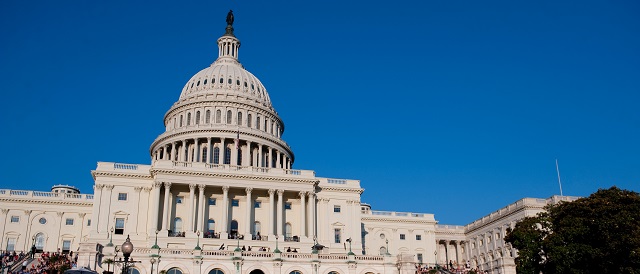
 From the Daily Caller News Foundation
From the Daily Caller News Foundation
Suppose Russian President Vladimir Putin and Chinese President Xi Jinping made an agreement: All their personnel stationed in Washington, D.C., would vote for the same candidates running in Washington’s local elections.
How many votes would this hypothetical alliance deliver? Perhaps not many — but more than a few.
The New York Times reported last July that the number of Russians working at their D.C. embassy had dropped significantly.
“In recent years, as many as 1,200 Russian personnel worked in the embassy compound,” said the Times. “The State Department will not say how many remain — staffing levels here and at the U.S. Embassy in Moscow are now a sensitive topic — but in January 2022, Mr. [Anatoly] Antonov [the Russian ambassador] put the number at 184 diplomats and support staff members.”
The website of the Chinese Embassy in Washington does not appear to mention how many Chinese nationals are deployed there. But it does talk about the massive size of the embassy building. “It covers an area of 10,796 square meters with a floor area of 39,900 square meters,” it says.
So, how can the Chinese nationals who work there — for a communist government — get away with voting in an American election?
How can Russians, working at the direction of Putin, do the same?
The D.C. government enacted a law that allows it.
On Oct. 18, 2022, the D.C. Council voted 12 to 0 — with one member absent and not voting — to approve the Local Resident Voting Rights Amendment Act. Despite this one-sided vote, Mayor Muriel Bowser did not support it.
“Mayor Bowser expressed opposition by withholding her signature on the Act — something she has done only a handful of times over the course of her tenure,” said a report on the act published by the House Oversight and Accountability Committee.
The Washington Post also opposed it — in an editorial published a day before the Council vote.
“Voting is a foundational right of citizenship,” said the Post. “That’s why we oppose a bill, poised to pass the D.C. Council this week, that would allow an estimated 50,000 noncitizen residents to cast ballots in local elections.”
The Post also pointed out that this bill would allow both illegal aliens and foreign nationals working at foreign embassies to vote in D.C. elections.
“The proposal has been expanded to give voting rights in local elections to all noncitizen adults, regardless of whether they are in the country legally, so long as they’ve resided in the District for 30 days,” said the Post.
“There’s nothing in the measure,” the Post said, “to prevent employees at embassies of governments that are openly hostile to the United States from casting ballots.”
The House committee report repeated these points.
“On November 21, 2022, the District government enacted the Local Resident Voting Rights Amendment Act … which allows noncitizens, including illegal immigrants, to vote in D.C. local elections,” said the report. “The Act makes no exception for foreign diplomats or agents voting in the District. These individuals often have interests separate from, or opposed to, the interests of Americans. This D.C. Act dilutes the votes of American citizens and could have a ripple effect across other large U.S. cities.”
The D.C. Board of Elections has posted online instructions for how foreign nationals can vote in D.C. elections.
“Starting in 2024, qualified non-citizen District of Columbia residents may vote in local elections,” say the instructions.
“Specifically, under District of Columbia law, non-citizen residents may vote in District of Columbia elections held for the offices of Mayor, Attorney General, member(s) of the DC Council, member(s) of the State Board of Education, or Advisory Neighborhood Commissioner(s), or to vote on initiative, referendum, recall, or charter amendment measures that appear on District of Columbia ballots,” say the instructions.
“Non-citizens cannot vote for federal offices,” they warn.
In its editorial opposing the bill, The Washington Post had made a key point about this last provision.
“The U.S. Constitution does not explicitly prohibit what the D.C. bill seeks to do, but a law signed in 1996 by President Bill Clinton bans noncitizens from voting in federal contests,” said the Post. “The proposed law presents logistical nightmares that will require the Board of Elections to print separate ballots so that noncitizens don’t vote in federal races.”
Republican Rep. James Comer of Kentucky introduced a resolution in January 2023 to nullify this D.C. voting law. When it came up for a vote on Feb. 9, 2023, then-House Speaker Kevin McCarthy spoke in support of it.
“Last year, Washington, D.C., passed a law that would give the vote to illegal immigrants,” McCarthy said on the House floor. “The law makes no exceptions for foreign diplomats or agents who have interests that are the opposite of ours. Under this bill, Russian diplomats would get a vote and Chinese diplomats could get a vote.
“The CCP is already infiltrating our culture, our farmland, and our skies,” said McCarthy, “but the D.C. council would let them infiltrate our ballot boxes.”
The resolution to nullify this D.C. law passed the House 260-162 — with 42 Democrats joining 218 Republicans.
But it went nowhere in the Senate.
On May 23, the House again approved a bill to stop noncitizens from voting in D.C. elections. This time the vote was 262 to 143 — with 52 Democrats voting for it.
Yet, this week, our nation’s capital had its first local primary election where Russian and Chinese agents could legally vote.
Terence P. Jeffrey is the investigative editor of the Daily Caller News Foundation. To find out more about Terence P. Jeffrey and read features by other Creators Syndicate writers and cartoonists, visit the Creators Syndicate website at www.creators.com.
International
RFK Jr. tells Tucker how Big Pharma uses ‘perverse incentives’ to get vaccines approved

From LifeSiteNews
By Matt Lamb
Kennedy defended his decision to fire all 17 members of the Advisory Committee on Immunization Practices, which he decried as a tool used to “rubber stamp” vaccines.
The vaccine approval process is a “bundle of perverse incentives” since pharmaceutical companies stand to make billions of dollars in revenue from it, Secretary of Health and Human Services Robert F. Kennedy Jr. told Tucker Carlson recently.
Kennedy appeared on Carlson’s show yesterday to discuss a variety of issues, including the potential link between autism and vaccines and his overhauling of the vaccine advisory committee at the Centers for Disease Control and Prevention last month.
Twenty years ago, Bobby Kennedy was exiled from polite society for suggesting a link between autism and vaccines. Now he’s a cabinet secretary, and still saying it.
(0:00) The Organized Opposition to RFK’s Mission
(6:46) Uncovering the Reason for Skyrocketing Rates of Autism… pic.twitter.com/g8T8te3kNC— Tucker Carlson (@TuckerCarlson) June 30, 2025
Kennedy began by explaining that Big Pharma has been targeting academic journals to ensure its products receive favorable reviews.
“The journals won’t publish anything critical of vaccines … there’s so much pressure on them. They’re funded by pharmaceutical companies, and they’ll lose advertising and revenue from reprints,” Kennedy said.
Kennedy then noted that Big Pharma will “pay to get something published in these journals,” before accusing industry leaders of pushing drugs on doctors and of hiring “mercenary scientists” to manipulate data until their product is deemed safe and effective.
The entire complex is broken due to the “perverse incentives,” he lamented.
Later in the interview, Kennedy defended his decision to fire all 17 members of the Advisory Committee on Immunization Practices (ACIP) in June, which he decried as a mere tool to “rubber stamp” vaccines.
It served as “a sock puppet for the industry that it was supposed to regulate,” Kennedy exclaimed, citing conflicts of interest for the overwhelming majority of its board members.
This sort of “agency capture” explains the lucrative nature of vaccines, he added.
— Matt Lamb (@MattLamb22) July 1, 2025
Kennedy then summarized the “perverse” process as follows:
First of all, the federal government often times actually designs the vaccine, [the National Institutes of Health] would design it, would hand it over to the pharmaceutical company. The pharmaceutical company then runs it … first through [the] FDA, then through [the] ACIP, and gets it recommended.
If you can get that recommendation you now got a billion dollars in — at least — revenues by the end of the year, every year, forever. So, there was a gold rush to add new vaccines to the schedule and ACIP never turned away a single vaccine … that came to them they recommended, and a lot of these vaccines are for diseases that are not even casually contagious.
Kennedy further pointed to the Hepatitis B shot for newborns as an example of how the industry has been corrupted.
In 1999, the CDC “looked at children who had received the hepatitis vaccine within the first 30 days of life and compared those children to children who had received the vaccine later — or not at all. And they found an 1,135% elevated risk of autism among the vaccinated children. It shocked them. They kept the study secret and manipulated it through five different iterations to try to bury the link,” he said.
“We want to protect public health,” Kennedy explained, but “these vaccines … can cause chronic disease, chronic injuries that last a lifetime.”
Censorship Industrial Complex
Global media alliance colluded with foreign nations to crush free speech in America: House report

From LifeSiteNews
By Dan Frieth
The now-defunct ad coalition GARM shared insider data and urged boycotts of Twitter to punish non-compliance with its ‘harmful content’ standards, a US House Judiciary report shows.
A new report from the U.S. House Judiciary Committee has shed light on what it describes as an alarming collaboration between powerful corporations and foreign governments aimed at suppressing lawful American speech.
The investigation focuses on the Global Alliance for Responsible Media (GARM), an initiative founded in 2019 by the World Federation of Advertisers (WFA), which the committee accuses of acting as a censorship cartel.
According to the report, GARM, whose members control about 90 percent of global advertising spending, exploited its market dominance to pressure platforms like Twitter (now X) into compliance with its restrictive content policies.
A copy of the report can be found HERE.
The committee highlighted how GARM sought to “effectively reduce the availability and monetization” of content it deemed harmful, regardless of public demand for free expression.
Documents obtained by the committee reveal direct coordination between GARM and foreign regulators, including the European Commission and Australia’s eSafety commissioner.
In one exchange, a European bureaucrat encouraged advertisers to leverage their influence to “push Twitter to deliver on GARM asks.”

Similarly, Australia’s eSafety Commissioner Julie Inman Grant praised GARM’s “significant collective power in helping to hold the platforms to account” and sought updates to “take into account in our engagement and regulatory decisions.”

Robert Rakowitz, GARM’s co-founder and initiative lead, expressed a chilling goal in private correspondence, stating that silencing President Donald Trump was his “main thing” and likening the president’s speech to a “contagion” he aimed to contain “to protect infection overall.”

The report outlines how GARM distributed previously unavailable non-public information about Twitter’s adherence to its standards, fully aware this would prompt advertisers to boycott the platform if it failed to conform. According to the House report, Rakowitz admitted that this information sharing was designed to encourage members not to advertise on Twitter.
He went as far as to draft statements urging GARM members to halt advertising on the platform, telling colleagues he had gone “as close as possible” to saying Twitter “is unsafe, cease and desist.”
Despite the widespread impact of GARM’s actions, including what the committee describes as coerced “concessions” from platforms, internal polling circulated within GARM showed that “66 percent of American consumers valued free expression over protection from harmful content.”
Still, GARM pressed ahead with efforts to “eliminate all categories of harmful content in the fastest possible timing,” ignoring consumer preferences.
Even after GARM dissolved in 2024 amid legal challenges, similar efforts persisted.
A new coalition led by Dentsu and The 614 Group briefly attempted to revive GARM’s mission before disbanding under scrutiny. Gerry D’Angelo, a former GARM leader, reflected on the initiative’s overreach, stating, “Did we go too far in those first rounds of exclusionary restrictions? I would say yes.”
The Judiciary Committee warns that despite GARM’s downfall, the threat of collusion to stifle free expression remains.
It pledged to continue oversight to defend “the fundamental principles” of the Constitution and ensure that markets, not coordinated censorship efforts, shape the flow of information in the digital age.
Reprinted with permission from Reclaim The Net.
-
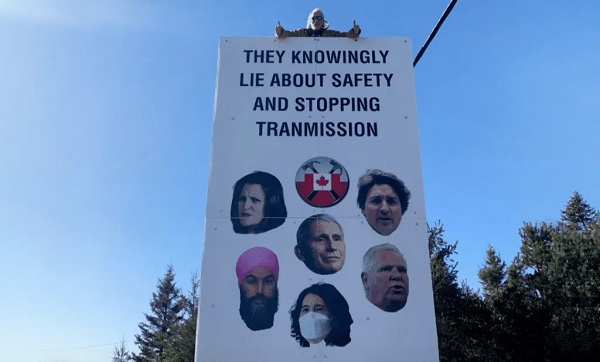
 COVID-192 days ago
COVID-192 days agoOntario man launches new challenge against province’s latest attempt to ban free expression on roadside billboards
-

 Energy2 days ago
Energy2 days agoThis Canada Day, Celebrate Energy Renewal
-

 COVID-1916 hours ago
COVID-1916 hours agoNew Peer-Reviewed Study Affirms COVID Vaccines Reduce Fertility
-

 Business12 hours ago
Business12 hours agoOttawa Funded the China Ferry Deal—Then Pretended to Oppose It
-
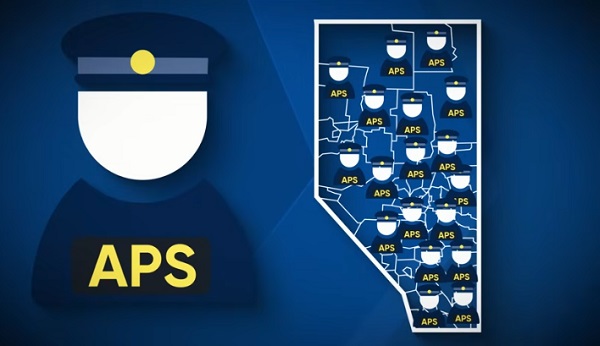
 Alberta1 day ago
Alberta1 day agoAlberta Next Takes A Look At Alberta Provincial Police Force
-
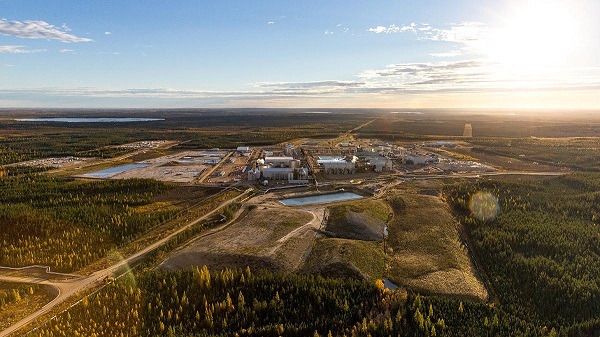
 Alberta2 days ago
Alberta2 days agoCanadian Oil Sands Production Expected to Reach All-time Highs this Year Despite Lower Oil Prices
-

 MAiD14 hours ago
MAiD14 hours agoCanada’s euthanasia regime is not health care, but a death machine for the unwanted
-

 Alberta15 hours ago
Alberta15 hours agoThe permanent CO2 storage site at the end of the Alberta Carbon Trunk Line is just getting started




